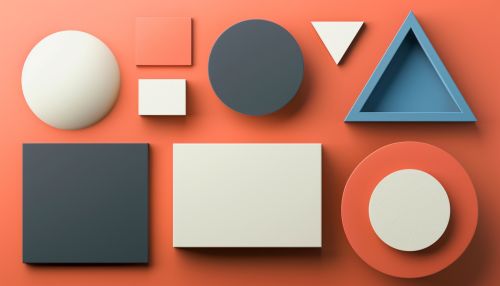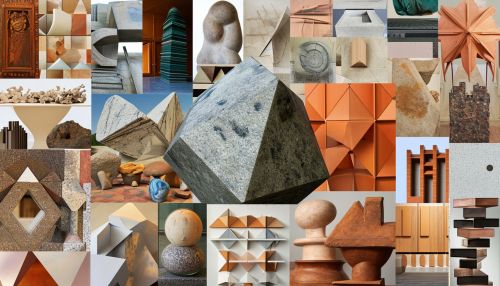Geometric shape
Definition
A geometric shape is the geometric information which remains when location, scale, orientation and reflection are removed from the description of a geometric object. That is, the result of moving a shape around, enlarging it, rotating it, or reflecting it in a mirror is the same shape as the original, and not a distinct shape.
Classification
Geometric shapes can be classified into two general types: two-dimensional (2D) and three-dimensional (3D).
Two-dimensional Shapes
Two-dimensional shapes, also known as plane shapes, are flat and can only be measured in two directions: length and width. Examples of 2D shapes include squares, rectangles, circles, triangles, and polygons.


Three-dimensional Shapes
Three-dimensional shapes, also known as solid shapes, have depth in addition to length and width. Examples of 3D shapes include cubes, cylinders, spheres, cones, and pyramids.
Properties of Geometric Shapes
Each geometric shape has specific properties that distinguish it from other shapes. These properties include sides, angles, vertices, faces, edges, and bases.
Sides
The sides of a shape are the lines that make up the boundary of the shape. For example, a square has four equal sides, while a rectangle has two pairs of equal sides.
Angles
An angle is formed where two sides of a shape meet. The measure of an angle is expressed in degrees. For example, a square has four right angles (90 degrees each), while a rectangle also has four right angles.
Vertices
A vertex is a point where two or more lines (sides) meet. For example, a square and a rectangle each have four vertices.
Faces
A face is a flat surface on a 3D shape. For example, a cube has six faces, each of which is a square.
Edges
An edge is a line where two faces of a 3D shape meet. For example, a cube has 12 edges.
Bases
A base is a special type of face on a 3D shape. It is typically the face on which the shape rests. For example, a cube has one base, while a cylinder has two.
Geometric Shapes in Mathematics
Geometric shapes are fundamental concepts in mathematics, particularly in the study of geometry. They are used to define and study concepts such as area, perimeter, volume, and surface area.
Area
The area of a shape is the amount of space it covers. It is measured in square units. For example, the area of a square is found by squaring the length of one of its sides.
Perimeter
The perimeter of a shape is the distance around its boundary. It is measured in linear units. For example, the perimeter of a square is four times the length of one of its sides.
Volume
The volume of a 3D shape is the amount of space it occupies. It is measured in cubic units. For example, the volume of a cube is found by cubing the length of one of its edges.
Surface Area
The surface area of a 3D shape is the total area of all its faces. It is measured in square units. For example, the surface area of a cube is six times the area of one of its faces.
Geometric Shapes in the Real World
Geometric shapes are not just abstract mathematical concepts; they are also found in the world around us. From the natural world to human-made structures and objects, geometric shapes can be seen everywhere.


For example, honeycombs in a beehive are hexagonal, many flowers and fruits are circular, and crystals often form in regular geometric shapes. In the human-made world, buildings are often rectangular, wheels are circular, and pyramids are, well, pyramidal.
